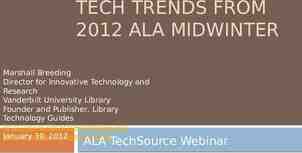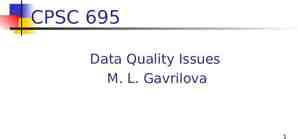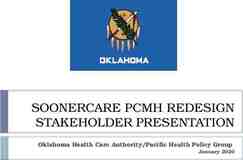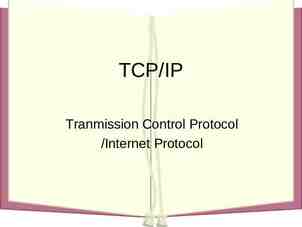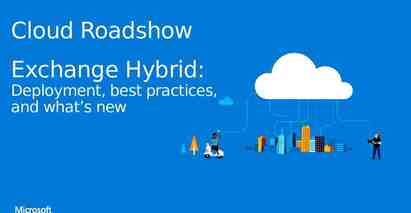Balance Sheet
34 Slides206.00 KB

Balance Sheet

Definition A balance sheet is “a statement of the financial position of an entity (business organisation) at a given date disclosing the assets, liabilities and accumulated funds such as shareholder contributions and reserves prepared in order to give a true and fair view of the financial state of the entity at that date” (CIMA) A balance sheet is an accounting statement that shows an organisation’s assets and liabilities at a particular point in time It is a statement of the resources of the resources owned and controlled by a business at a single point in time

Balance sheet - the essence The balance sheet shows what is owned (the value of assets), what is owed (its liabilities) and what is left (owners’ equity) Basically it records the value of assets owned, what the business owes to others and how it was financed It provides a concise snapshot of a company’s financial position It measures the financial standing or the net worth of a company at the end of a given point in time The format of a company’s balance sheet is defined by the Companies Act 1985

Compare with the P&L Account P&L Account Main elements: – – – income (revenue) expenses (costs) profit or loss Period covered – usually a year Main focus – profits Balance sheet Main elements – – – assets liabilities capital Period covered – a point in time Main focus – value of net assets

Balance sheet equation (1) TA E TL (where TA is total assets, E is shareholders equity /shareholders funds and TL is total liabilities) Therefore E TA – TL The value of shareholders’ equity is equal to value of total assets minus the value of total liabilities

Balance sheet equation (2) FA CA E LTL CA We have broken total assets down into fixed assets and current assets and total liabilities down in to long term liabilities and current liabilities Therefore FA CA – CL - LTL E This can be tidied up as: FA (CA - CL) – LTL E In summary this the vertical format of the balance sheet

Horizontal and vertical In the past the balance sheet was shown in the horizontal formal with assets on one side and the sum of long term liabilities and shareholders’ fund (or owner’s equity) on the other side There was a balance between the capital raised (from owners and from loans) and the assets that it acquired The modern format is vertical and is based on the expanded balance sheet equation shown above

Horizontal format Assets Liabilities Fixed assets Current assets Shareholders funds Long term liabilities Current liabilities

Vertical format Fixed assets Net current assets - Long term liabilities Shareholders funds/ owners equity Fixed assets are shown at historical value less accumulated depreciation Current assets less current liabilities. Also know as working capital Long term loans to the business Money raised from a share issue and reserve e.g. retained profit

A simplified balance sheet ( k) Fixed assets less depreciation 600 Current assets (stock, debtors and cash) Current liabilities 250 140 Net current assets (CA- CL) 110 Total assets less current liabilities 710 Long term liabilities 470 Net assets (assets – all liabilities) 240 Owners’ equity 240

Key terms Capital employed: the total of fixed assets and current assets used in the business less current liabilities (or fixed assets plus working capital) Capital employed is equal to long term liabilities shareholders’ funds Net assets: the excess of the book value of all assets over all liabilities (including loan capital) Fixed assets net current assets (i.e. CA less CL) less long term loans It is capital employed minus long term liabilities

Assets Assets are what the firm owns and what it is owed to the firm. They are the resources the company uses to conduct business Alternatively, they can be seen as everything the firm owns that has a monetary value. Something owned by the business that has a measurable cost Assets bring economic benefit though their sale (e.g. stocks) or use (e.g. equipment)

Types of assets Assets can be subdivided into: Fixed assets – – – – provide a benefit for more than 12 months tangible fixed assets (e.g. equipment) intangible fixed assets (e.g. goodwill) financial assets (e.g. investments in other companies) – – – – – provide a benefit for less than 12 months stocks debtors or amounts receivable cash prepayments Current assets

Fixed assets Defined as any asset acquired for retention by the business for the purposes of providing a service to the business rather than for resale in the normal course of trade Example: a builder will buy a cement mixer to use – not to sell A plumber will buy a van for use in the business In each case the asset is classed as a fixed asset On the other hand a motor trader will buy a van to sell to customer. For a motor trader the van is not a fixed asset but it is stock

Tangible fixed assets Tangible assets have a real or physical existence These are assets that remain in possession of the business over a long period of time, i.e. in excess of one years These items are not traded as part of a company’s normal activities but enable it to function These infrastructure assets include: – – – – – land and buildings plant and machinery and equipment fixtures, fittings, tools and equipment vehicles assets in course of construction

Depreciation Fixed assets with finite lives are subject to depreciation charges Depreciation is a measure of the amount of a fixed asset that has been used up during the accounting period Depreciation is allocated to charge a fair proportion of total costs of the asset to each accounting period that benefits from its use Fixed assets are shown as net book value i.e. historical value less accumulated depreciation

Intangible fixed assets Intangible assets cannot be seen or touched as they do have a physical existence They take the form of: – trade marks and brand names – goodwill-the differences between the value of the business and the aggregate value of the different assets – licenses – patents and copyright (intellectual property) Intangible fixed assets tend to appear on a balance only after they have been purchased e.g. purchase in a take over

Current assets These are assets used in day to day trading These items form the trading cycle of the business They take the form of cash or assets that can easily be turned into cash These are short term assets and consist of:- – Stocks: goods purchased and awaiting use or produced and awaiting sale – Debtors: amounts owed to the company – Prepayments: amounts paid in advance (e.g. rent) – Cash and money deposited on a short term basis with a bank

Stocks One accounting problem is that of placing a value on the stock when the balance sheet is drawn up. It is likely that batches of stock were purchased at different times and at different prices. Also, rising prices often means that value might have risen since the stock was purchased Stock is generally valued at the lower of – cost (what the business paid for it) – net realisable value (the amount it would realise if sold) Different approaches to stock valuation give scope for differences in balance sheet values

Liabilities Liabilities refer to amounts the firm owes to others and which have monetary value It is the amounts that the business is obliged to pay to other people and organisations Liabilities can be: – – – short term (current liabilities) long term capital-liability owed by the business to the owner

Current liabilities These are short term liabilities - or items that form the trading cycle of the business and represent short term amounts owed to other These short term liabilities are defined as amounts falling due within one year:– – – trade creditors - money owed to suppliers financial debts - loans repayment within a year bank overdrafts which are repayable on demand

From where did long term finance come? The last items on a balance sheet inform us of the sources of finance used to acquire assets: – long term liabilities-loans which have to repaid a a period of more than 12 months – reserves e.g. retained profits – share capital: finance raised through selling shares

Long term liabilities/loan capital This refers to the amount the business owes and is due to be paid back in the longer term (more than one year) This is money loaned to the company by third parties. They are not owners of the company. They are entitled to interest on their money but not to a dividends Remember that all long term liabilities eventually become current liabilities

Types of long term liability Long term trade creditors - payable after one year Financial debt payable after one year - secured and unsecured loans. Bank loan repayable after several years Mortgage loan - a loan secured against property Provisions - in line with the prudence concept, provisions refer to amounts charged for an expected liability or loss even though the amount or date of the liability is uncertain. In a sense is mentally putting money aside for an eventual liability. Debenture - a bond recording a long term loan to a company. It is like a share in the sense that it is marketable but unlike a share in does confer rights of ownership of the company

Equity (also known as shareholders’ funds) The total investment of the shareholders in the company It is what the shareholders have contributed to and have left in the business It appears as a liability because it belongs to shareholders and not to the business itself Equity is the owners’ claim against the business It is equal to the share capital plus reserves (premiums and the cumulative retained profits over the business life)

Share capital The capital of the company divided into shares Share capital the number of shares x nominal value of shares We need to distinguish between: – Authorised share capital: the amount of share capital that a company is allowed to issue to shareholders – Issued share capital: the amount of share capital actually issued – Called up share capital: the amount of issued capital that has been fully paid to the company by shareholders

Reserves A reserve is a fund, formally belonging to the owners of the business, which represents value retained in the business for some purpose or other A reserve is part of the shareholders’ claim on the total assets of the business Caution: it does not necessarily represent cash available to spend. Reserves will be held in the form of various forms of assets

Revenue reserve They arise from the normal trading activities of the business and are created at the discretion of directors of the company They are profits withheld from dividend distribution and retained in order to strengthen the financial position of the company These reserves are available for distribution to shareholders as dividends if directors choose Two revenue reserves are: – General reserve: a reserve created to deal with general contingencies – Profit and loss account: accumulated retained profits

Retained profit in the balance sheet This figure is the total of all the accumulated retained profits from all accounting periods since the business started It increases or decreases each year by the net profit or loss in that year, calculated after providing for all costs including tax and dividends to shareholders Retained profits are increased by the annual net profit minus dividend payable

Capital reserves Capital reserves arise from capital transactions and adjustments to capital structure Share premium: where a company issues shares for a sum greater than their nominal value. The difference between the sum raised at the issue price and nominal value of the shares is shown as share premium reserve Revaluation reserves: if a company revalue's its assets the surplus on revaluation must be added to this account. It usually applies to land and buildings which rise in value The capital reserves are not available for the purposes of paying a dividend

Interpretation - what to look for Net assets / shareholders funds: – are they growing or declining? Net current assets: – balance between current assets and current liabilities – solvency of the business Trade debtors and trade creditor payments – volume of debtor and creditors Balance between debt and equity – commitment to pay interest

Interpreting a balance sheet A comparison is needed is needed for a meaningful interpretation - either a historical comparison or inter-firm comparisons. A balance sheet for a business in one type of market will be very different from one in a very different type of business Therefore inter-firm comparisons are only valid for firms with a similar size and product range Note the date on which the balance is drawn up –this is especially significant in the case of a firm with a distinct seasonal pattern to trade

A word of caution A balance sheet is a snapshot at a particular point of time Balance sheet items can be “window dressed” The balance sheet does not reveal the value of a business since it is unlikely to record the current value of intangible assets or the current value of property It does not record qualitative factors (e.g. the quality of the fixed assets)

What it does not show A company’s market worth Intangible assets e.g. knowledge, skills of the workforce Vital business factors such as market share Trends that affect performance The true value of some fixed assets The position after the date on which the balance sheet is constructed

